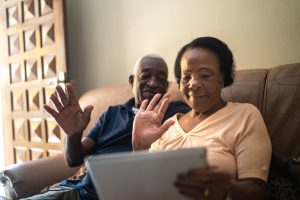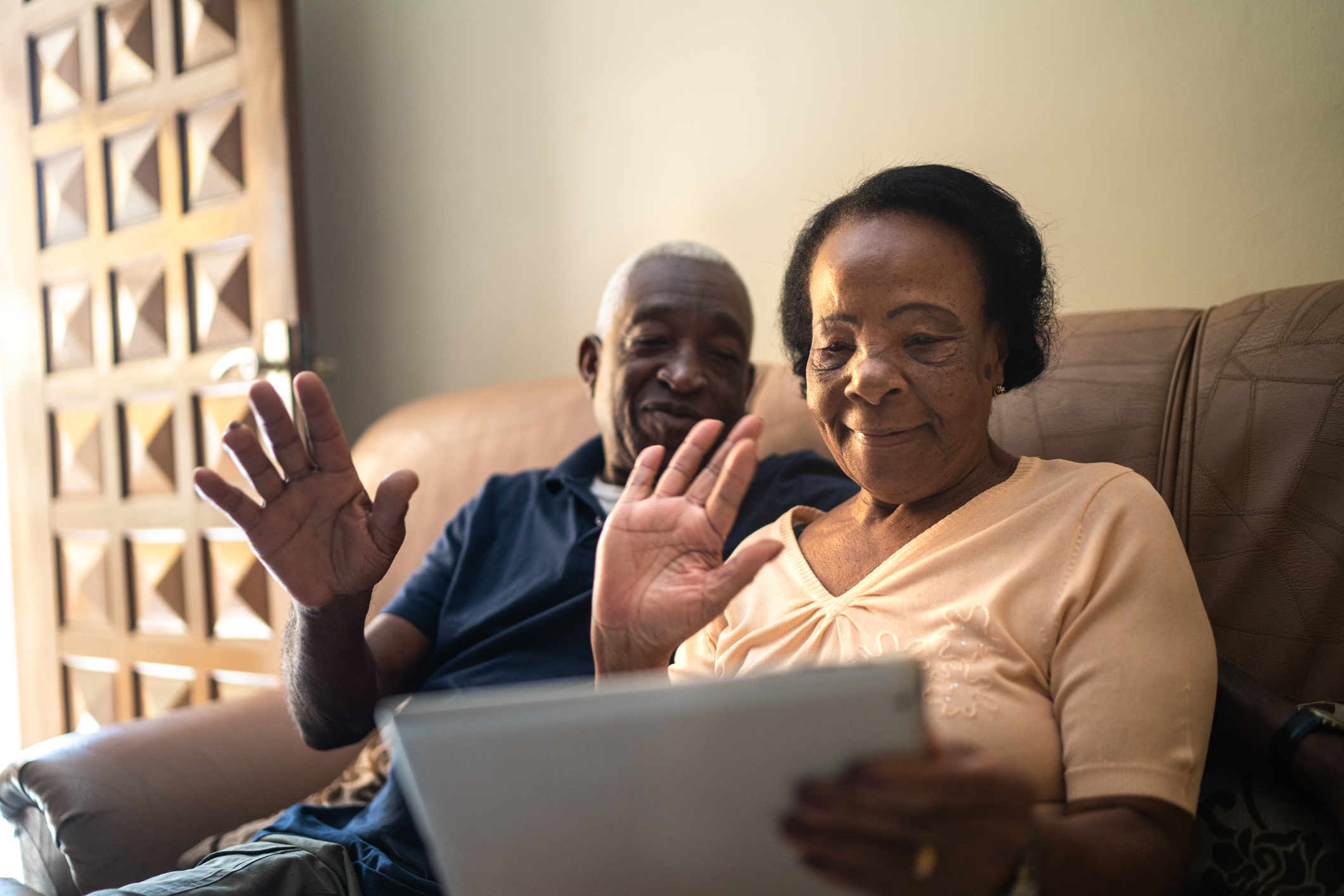
Given the public health emergency of the COVID-19 pandemic, many healthcare providers were in need of safer alternatives to deliver care. One way Associate Professor Tuhin Virmani, MD, Ph.D. and Assistant Professor Mitesh Lotia, M.D. have created safer options for their Parkinson’s patients and research participants, is by delivering care through Telehealth. Dr. Virmani and Dr. Lotia are with the Department of Neurology at the University of Arkansas for Medical Sciences (UAMS) and part of a team of co-investigators researching Parkinson’s disease in patients in rural Arkansas. Due to the rurality of the state, recruiting subjects to be involved in research can be difficult, given most would be required to travel long distances to participate. This obstacle prevents many subjects from making extra visits to UAMS to participate in Parkinson’s disease research.
Now, with the assistance of the South Central Telehealth Resource Center (SCTRC), this group is using telehealth technologies and adapting and modifying motor skill monitoring techniques to use as part of an evaluation for patients with Parkinson’s disease via a remote or digital environment. The initial idea for this project was to see patients virtually from their local healthcare center. This would prevent patients from not only traveling long distances and spending money on the associated costs of travel. Given the additional development of COVID-19 during project development, the project also keeps patients from entering a large hospital where their chance of contracting COVID-19 could increase.
Parkinson’s Research & Telehealth
The main goal for conducting Parkinson’s disease research via telehealth is to give patients in rural Arkansas more of an opportunity to participate in the research and provide them a safer alternative to being able to take part. One way the UAMS Movement Disorders group is working to collect information about each patient is by digitally collecting their handwriting on a tablet and collecting their voice through an audio message they would read aloud. Additionally, a significant portion of a patient’s movement disorders examination can be completed through telehealth video consults as well. Whether patients are at their homes or a local healthcare facility implementing telehealth video consults, it can greatly impact their safety, eligibility to participate, and financial burdens.
While telehealth implementation has been successful, there are still areas of improvement under this study. In using telehealth in patients with Parkinson’s disease, the patient population consists of older adults. Dr. Virmani stated that this population may be less likely to have the equipment, high bandwidth internet connectivity, and technological know-how to participate in telehealth video consults. The patient population in the movement disorders clinic, during COVID-19, led to increased telehealth visits. Most patients were initially participating in their clinical care by means of audio-only visits. Improving comfort with telehealth technology will also be important for larger-scale use.
Another barrier patients have faced since COVID-19 is the inability to have family members at in-person clinic visits. With telemedicine, given the relative ease of family participation at home, patients have had children and grandchildren assist them technologically with visits. Assistance ranges from support with technology set-up and troubleshooting, finding access to wireless broadband connectivity, and setting up their patient-facing Electronic Medical Record (EMR). Dr. Virmani and Dr. Lotia also mentioned that patients who do not already have appropriate wireless connectivity may be unable to shoulder the additional costs to obtain such services, especially in more rural parts of the state, to participate in clinical visits from home.
Telehealth Next Steps
Telehealth is valuable not only for patients who are required to travel long distances to obtain clinical care, but through the research part of this study. It also allows patients to feel empowered by participating in research towards improving care for people with Parkinson’s disease.
Improving broadband coverage across the state is one of the largest needs not only for this study, but also for all patients and providers needing virtual healthcare. Another major need highlighted by the increased dependence on telehealth is the development of of resources for patients to understand more about telehealth, the equipment needed and broadband required to run it as well as troubleshooting resources. Lastly, Dr. Virmani and Dr. Lotia noted that insurance providers allowing physicians to continue to utilize telehealth technology to deliver high quality clinical care in the long term will be important in the future.
Dr. Lotia stated, “Telemedicine needed to happen yesterday, but I’m glad it’s happening today.”
 SCTRC and UAMS Movement Disorders Research Group
SCTRC and UAMS Movement Disorders Research Group
Dr. Hari Eswaran and Terri Imus, RN, and Aaron Kemp, PhD(c), contribute to the SCTRC team in the Institute for Digital Health & Innovation and are contributing to this collaborative effort. The IDHI SCTRC team is providing advice and consultation to this research team to optimize their use of telehealth technologies and the implementation of clinical research informatics to manage the compilation of data while ensuring the privacy and security of research participant’s private information.
For more information on this research group, please visit the following:
https://tri.uams.edu/news/tri-announces-pilot-awardees-for-biomedical-informatics-studies/
Contributed by: Aaron Kemp, PhD(c), University of Arkansas for Medical Sciences





